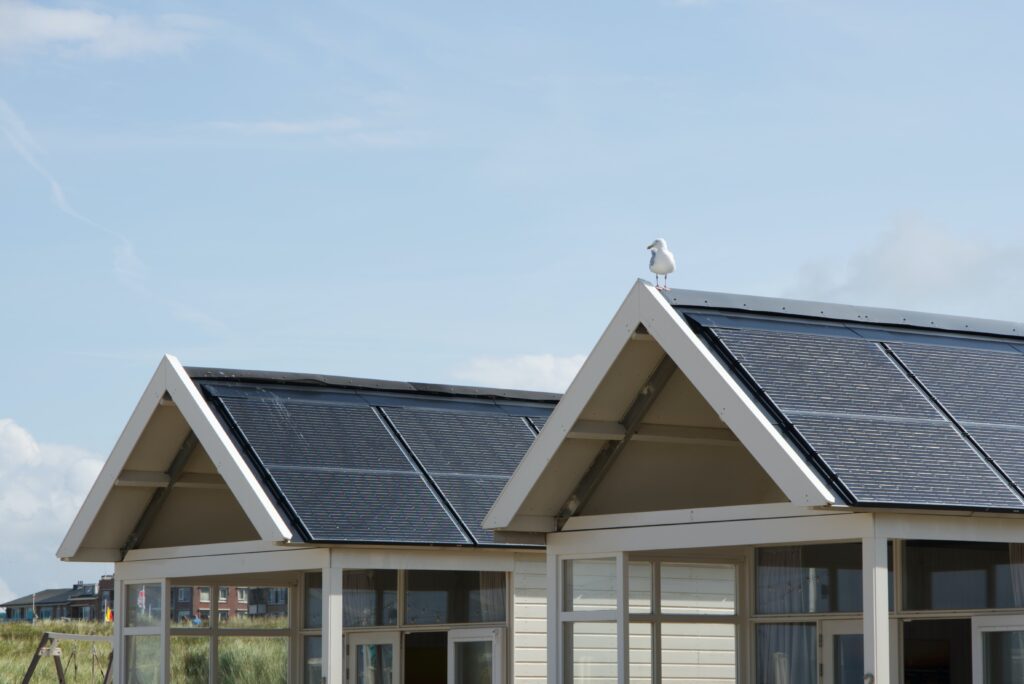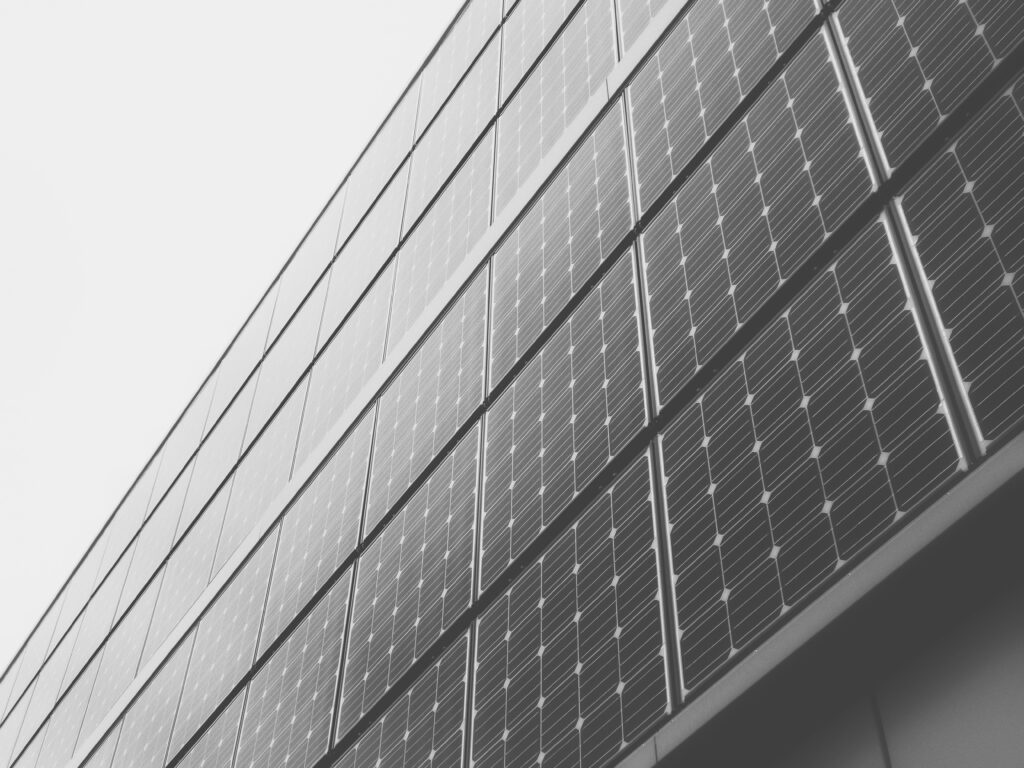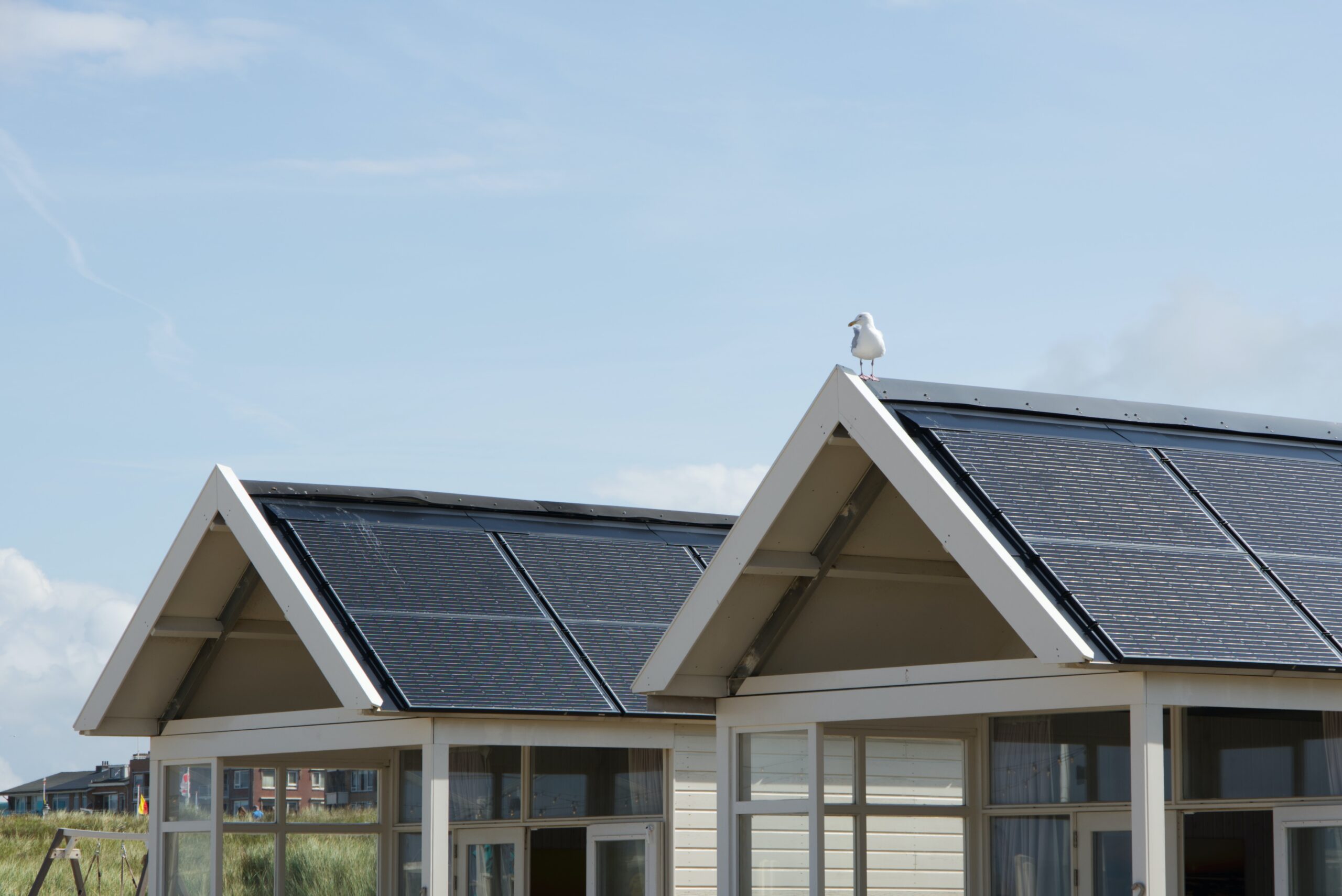Are you considering adding solar panels to your shipping container home but aren’t sure where to start? Look no further! In this article, we will explore the best ways to incorporate solar panels into your container home, providing you with the necessary insights and guidance to make an informed decision. From the types of panels to consider, to the optimal positioning and installation techniques, we’ve got you covered. Harnessing the power of the sun has never been more accessible, so let’s delve into the world of solar energy and discover how you can make your shipping container home more sustainable and energy-efficient.



This image is property of images.unsplash.com.
Understanding Solar Energy and Its Benefits
The basics of solar energy
Solar energy is a renewable source of energy that is harnessed from the sun’s rays. It is a clean and sustainable form of energy that has gained popularity in recent years due to its numerous benefits. Solar energy can be converted into electricity through the use of solar panels, which are comprised of photovoltaic (PV) cells. These cells absorb sunlight and convert it into electricity, which can be used to power various appliances and systems in our homes.
How solar energy is produced
Solar energy is produced through the process of photovoltaic conversion. When sunlight hits the surface of the solar panels, the PV cells within the panels absorb the photons from the light. These photons then dislodge electrons from the atoms in the PV cells, creating an electric current. This current is then collected and directed through an inverter, which converts the direct current (DC) into alternating current (AC) that can be used to power our homes.
Environmental benefits of solar energy
Solar energy is a clean and renewable source of energy, which means that its production does not contribute to harmful emissions or pollution. Unlike fossil fuels, solar energy does not release greenhouse gases or air pollutants, making it an environmentally friendly alternative. By choosing solar energy, you can help reduce your carbon footprint and contribute to the fight against climate change.
Economic benefits of solar energy
In addition to its environmental benefits, solar energy also offers several economic advantages. By installing solar panels on your shipping container home, you can significantly reduce your energy costs. Once the initial investment is made, the sun’s energy is free, which means that you can generate your own electricity without relying on utility companies. Over time, the savings on your energy bills can outweigh the initial cost of installing solar panels, resulting in long-term financial benefits.
The Importance of Solar Energy for a Shipping Container Home
Energy efficiency and sustainability in shipping container homes
shipping container homes are known for their energy efficiency and sustainability, and solar energy plays a crucial role in enhancing these features. By harnessing the power of the sun, you can rely less on traditional energy sources, reducing your environmental impact and preserving natural resources. Solar energy is a perfect match for shipping container homes, as it aligns with their eco-friendly and self-sufficient nature.
Reduction of energy costs
One of the main advantages of installing solar panels on your shipping container home is the significant reduction in energy costs. By generating your own electricity, you can eliminate or greatly reduce your monthly electricity bill. This is especially beneficial for those living off-grid or in remote areas where access to traditional electricity sources may be limited or expensive. With solar panels, you can enjoy a more sustainable lifestyle while saving money.
The convenience of off-grid living
Solar panels provide the opportunity for off-grid living, which means that you can live independently from the traditional power grid. This is particularly advantageous for shipping container homes, as they can be located in remote areas where grid connections may be difficult or cost-prohibitive. Off-grid living allows you to be self-sufficient in terms of energy, giving you the freedom and flexibility to live in any location without worrying about access to electricity.



This image is property of images.unsplash.com.
Different Types of Solar Panels
Introduction to different types of solar panels
There are several types of solar panels available in the market, each with its own advantages and disadvantages. The two most common types are monocrystalline and polycrystalline solar panels. Monocrystalline panels are made from a single crystal structure, making them highly efficient and space-saving. On the other hand, polycrystalline panels are made from multiple crystal structures, resulting in slightly lower efficiency but also a lower price point.
Comparison of efficiency and price
When choosing a solar panel for your shipping container home, it’s important to consider both the efficiency and price. Monocrystalline panels tend to have a higher efficiency rating and are more expensive compared to polycrystalline panels. However, the price difference may be offset by the higher energy production of monocrystalline panels over their lifespan. It’s essential to evaluate your energy needs and budget to determine which type of solar panel is the best fit for your home.
Choosing the right solar panel for your shipping container home
The choice of solar panel for your shipping container home depends on various factors such as budget, available space, and energy requirements. If you have limited roof space or a tight budget, polycrystalline panels may be a suitable option. However, if you prioritize efficiency and have more space available, monocrystalline panels can maximize energy production. Consulting with a solar panel professional can help you assess your needs and make an informed decision.
The Process of Installing Solar Panels on Shipping Container Homes
The pre-installation process
Before installing solar panels on your shipping container home, it’s important to assess the feasibility of the installation. This involves evaluating the structural integrity of the container, determining the optimal placement of the panels, and obtaining any necessary permits or approvals from local authorities. It’s advisable to consult with a professional installer who can guide you through these initial steps and provide expert advice.
Arranging and securing the panels
Once the pre-installation steps are complete, it’s time to arrange and secure the solar panels on your shipping container home. The panels should be positioned in a way that maximizes exposure to sunlight and minimizes shading. This often involves mounting the panels on a sturdy frame or rack that is securely attached to the roof or ground. Proper installation and secure fastening are crucial to ensure the panels remain stable and efficient.
Connection of the panels to the home’s electrical system
After securing the panels, they need to be connected to your shipping container home’s electrical system. This typically involves installing an inverter that converts the DC electricity generated by the panels into AC electricity that can be used to power your home’s electrical appliances and systems. Proper wiring and connection are essential to ensure the safe and efficient transfer of electricity.
Attention to legal and local authority regulations
When installing solar panels on your shipping container home, it’s important to comply with any legal and local authority regulations. This may include obtaining permits, adhering to specific installation guidelines, and ensuring compliance with building codes. Failure to comply with these regulations can result in fines or legal issues, so it’s crucial to consult with professionals and follow all necessary procedures.



This image is property of images.unsplash.com.
Choosing the Right Location for Solar Panels
Determining the best direction for solar panels
The direction of your solar panels plays a significant role in their energy production. In the northern hemisphere, it’s generally recommended to orient your panels towards the south to capture the maximum amount of sunlight throughout the day. However, other factors such as shading from nearby trees or buildings should also be considered when determining the ideal direction for your panels. Consulting with a solar panel professional can help you determine the best orientation for your specific location.
Assessing shading and tilt angles
Shading can have a significant impact on the efficiency of your solar panels. It’s crucial to evaluate the surrounding environment to identify any potential sources of shade, such as trees, buildings, or nearby structures. Minimizing shading is important to ensure that your panels receive as much sunlight as possible. Additionally, the tilt angle of the panels should be optimized to maximize energy production based on the latitude of your location.
The impact of location on energy production
The location of your shipping container home can greatly affect the energy production of your solar panels. Regions with higher solar insolation, such as areas closer to the equator, generally receive more sunlight and therefore have greater solar energy potential. However, even in areas with lower solar insolation, solar panels can still provide a significant amount of energy. It’s important to consider your specific location when estimating the energy production and potential savings of your solar panel installation.
Dealing With Power Storage
Need for power storage systems
Power storage systems are essential for shipping container homes that rely on solar energy. These systems allow you to store excess electricity generated by your solar panels for use during periods of low sunlight or at night. Without a storage system, any excess electricity would be wasted, as it cannot be fed back into the grid. Power storage systems ensure that you have a continuous and reliable power supply, making them crucial for off-grid living or areas with unreliable grid connections.
Understanding battery storage systems
Battery storage systems are commonly used to store electricity generated by solar panels. These systems consist of rechargeable batteries that store the excess energy and release it when needed. When choosing a battery storage system, factors such as capacity, lifespan, and efficiency should be considered. Lithium-ion batteries are often preferred due to their high energy density, long lifespan, and low maintenance requirements.
Selecting the right battery for your needs
Choosing the right battery for your shipping container home depends on factors such as energy consumption, storage capacity required, and budget. It’s crucial to assess your energy needs and usage patterns to determine the appropriate battery capacity. Additionally, considering the lifespan and maintenance requirements of the battery can help you make an informed decision. Consulting with a solar energy professional can assist you in selecting the most suitable battery for your specific needs.
Understanding The Costs Involved
The price range of solar panels
The cost of solar panels for shipping container homes can vary depending on factors such as brand, type, and the size of the installation. Generally, the price range for solar panels can start from a few thousand dollars and go up depending on the size and capacity of the system. It’s recommended to obtain quotes from multiple solar panel installers to compare prices and ensure you are getting the best value for your investment.
Return on investment
While installing solar panels on your shipping container home requires an initial investment, it can result in long-term financial benefits. By generating your own electricity, you can significantly reduce or eliminate your monthly energy bills, resulting in savings over time. The return on investment will depend on various factors such as the cost of energy in your area, the efficiency of your solar panels, and the size of the installation. Consulting with a solar energy professional can help you estimate the potential return on investment for your specific circumstances.
Grants, incentives, and tax credits for solar energy
To encourage the adoption of solar energy, many governments and organizations offer grants, incentives, and tax credits for solar panel installations. These financial incentives can help offset the initial costs and make solar energy more affordable. It’s important to research and explore the incentives available in your area to maximize the financial benefits of installing solar panels on your shipping container home. Additionally, consulting with a solar energy professional can help you navigate the incentive programs and ensure you take full advantage of the available opportunities.
Maintenance and Long-Term Upkeep of Solar Panels
Regular cleaning of solar panels
To ensure optimal performance, it’s important to regularly clean your solar panels. Dust, dirt, leaves, and other debris can accumulate on the surface of the panels, reducing their efficiency. Cleaning the panels with a soft cloth or sponge and mild detergent can help remove any build-up and maintain their effectiveness. Additionally, it’s advisable to check the panels for any signs of damage or wear during the cleaning process.
Routine inspection for damages
Routine inspection of your solar panels is crucial to identify any damages that may affect their performance. Inspect the panels for cracks, loose connections, or signs of wear and tear. If any damages are found, it’s important to address them promptly to avoid further issues. Regular inspections can help prolong the lifespan of your solar panels and ensure they continue to generate electricity efficiently.
Dealing with repairs and replacements
In the event of any damages or malfunctions, it’s important to contact a qualified solar panel professional for repairs or replacements. Attempting to fix the issues yourself can be dangerous and may void any warranties on your panels. It’s recommended to keep a record of your solar panel installation and any maintenance or repairs conducted to ensure you have accurate documentation in case of warranty claims or insurance purposes.
Challenges When Installing Solar Panels on Shipping Container Homes
Physical constraints and design challenges
Installing solar panels on shipping container homes can present unique challenges due to their size, structure, and design. Limited roof space, unconventional mounting options, and specific structural considerations may require creative solutions and expert advice. It’s crucial to consult with a professional solar panel installer who has experience working with shipping container homes to ensure a safe and efficient installation.
Weather-related issues
Weather conditions, such as high winds, hail, and extreme temperatures, can pose challenges when installing solar panels on shipping container homes. Proper mounting and securing techniques should be employed to ensure the panels can withstand the expected weather conditions in your area. Additionally, regular inspections and maintenance can help identify and address any issues caused by severe weather events.
Dealing with professional installation personnel
Finding qualified and experienced professionals to install solar panels on shipping container homes can sometimes be challenging. It’s important to select reputable installers who have experience with similar projects and adhere to industry standards. Researching customer reviews, certifications, and credentials can help you make an informed decision and ensure a successful installation.
Case Study: Successful Solar Panel Installations on Shipping Container Homes
Showcase of successful installations
There have been numerous successful solar panel installations on shipping container homes worldwide. These installations have demonstrated the feasibility and benefits of utilizing solar energy in shipping container home projects. Showcase examples highlight the unique designs, energy self-sufficiency, and environmental advantages of combining solar panels with shipping container homes.
Lessons learned from real-world examples
Real-world examples of solar panel installations on shipping container homes provide valuable insights and lessons learned. These projects showcase the challenges faced during the installation process, innovative solutions implemented, and the positive impact achieved. Learning from these examples can help you avoid common pitfalls and make informed decisions when planning your own solar panel project.
Inspiration for your own solar panel project
Successful solar panel installations on shipping container homes can serve as inspiration for your own project. By exploring different designs, configurations, and energy solutions, you can tailor a solar panel installation that meets your specific needs and preferences. Drawing inspiration from real-world examples can help you envision the possibilities and unleash the full potential of solar energy for your shipping container home.
In conclusion, solar energy offers a multitude of benefits for shipping container homes. From energy efficiency and sustainability to reducing energy costs and enjoying the convenience of off-grid living, solar panels are a valuable addition to any shipping container home. By understanding the basics of solar energy, exploring different types of solar panels, and following the proper installation and maintenance processes, you can harness the power of the sun and create a self-sufficient and eco-friendly shipping container home. With the right planning, research, and professional guidance, your solar panel project can be a rewarding and successful endeavor.
